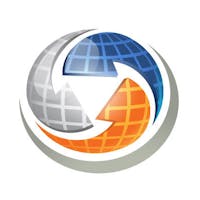Sure—the letter “I” is used three times to spell “interoperability.” But look beyond the word, as clunky and confusing as it may seem, and focus instead on its essence and the possibilities that are inherent in its definition.
What is interoperability? Simply put, it is the ability for systems and applications to interact and exchange data. When put into context for educational technology, interoperability means that all of the digital content, tools, and resources used by teachers and students work well together. Consider this example:
Ms. Lincoln teaches seventh grade at a diverse middle school. She’s excited that her district is transitioning to digital content which is interactive, customizable, less expensive and more engaging. Ms. Lincoln likes to hit the ground running, so every Monday when students get to her classroom the first thing they do is log into the learning management system (LMS) to participate in an online course.
Ms. Lincoln that knows by selecting and adding vetted content from a variety of tools linked into the LMS, her students will have more learning opportunities . The content comes from different platforms and assessment programs, but because the district has embraced a standards-based approach to integrating their digital ecosystem, those different sources won’t be an issue for Ms. Lincoln or her students. Ms. Lincoln doesn’t have to spend time creating new accounts or passwords for her students before assigning resources based on language, reading level, accessibility, and type. She doesn't have to procure or transfer user licenses. Instead, Ms. Lincoln spends her time working with individual students or small groups, differentiating instruction and maximizing the time that she spends teaching. And she can monitor her students’ progress from a central interface without having to manually aggregate data, which helps her remediate or extend instruction as needed.
Without interoperability, the various digital systems and resources at an institution or district operate in silos, requiring educators to spend time managing their learning technology instead of teaching.
But when edtech systems are genuinely interoperable, students and teachers can go digital on day one of learning, no matter what day that is because the information exchange is effortless and doesn’t require additional intervention. Students and teachers get one-click, easy access to their content, apps and tools from the learning management system, portal, or learning object repository (or all three).
Interoperability Is the Goal. Standards Get Us There.
Interoperability of learning technology is the foundation that enables an institution to continuously improve instruction and innovation in their educational technology. But achieving true interoperability is not an easy task.
Open interoperability standards—agreed upon ways to exchange information—can enable your educational technology to work together. Basically, standards are the most efficient way to achieve interoperability.
IMS Global Learning Consortium is a nonprofit, member-based organization with over 480 members (and growing) that has been working to advance interoperability in educational technology for nearly 20 years through the development of core interoperability standards. IMS K-12 member institutions and state departments of education, including 44 percent of the 25 largest school districts, are leading the work of developing IMS Global Learning Consortium standards to improve teaching and learning for the benefit of all K-12 institutions.
Back to That ‘I’
There is no “I,” as in, no single dominant individual, when it comes how a school, district or other group achieves true interoperability.
The commitment to building and growing an interoperable ecosystem of innovative and useful learning solutions for K-12 institutions and districts requires collaboration and leadership. IMS Global K-12 members are catalyzing cooperation among education and technology leaders to set priorities for solving critical IT, curriculum, and instructional technology challenges—now, and in the future. To help K-12 institutions of all sizes, members developed the K-12 Digital Learning Revolution Program, a strategy for systematically evolving your school or district’s digital learning environment and providing a foundation to make significant, advances in your digital teaching and learning practices.
Tips for Implementing Open Standards and Interoperability
Determine a shared vision with your IT and curriculum and instructional leaders.
It is essential to have inter-departmental collaboration and routine communication to make interoperability possible, so work with academic and technology executive team members to develop implementable plans and organizational processes to phase in the adoption of products that meet your institution’s needs.
Develop an implementation roadmap that’s aligned with your district’s strategic plan.
Change takes time and can be represented with an digital ecosystem development blueprint. The program emphasizes that before you buy new learning tools and applications or change existing resources, you must align these choices with the institution’s or district's strategic plan. Coordination among organizational units before buying edtech can make—or break—your digital ecosystem.
Verify that your products are certified by IMS Global.
The IMS playbook can help you understand which open standards you should require in your edtech products. Implementing IMS-certified interoperable products is a very important and necessary step to being able to scale and sustain a digital ecosystem that provides a cohesive experience for teachers and students, while allowing institutional leaders and educators the flexibility to innovate with new products and approaches. IMS conformance certification reassures you that products have implemented IMS standards correctly. You can find out which products have achieved certification in the official IMS Product Directory at imscert.org.
IMS Global is proud to be a partner of the 2018 EdSurge Fusion Conference on Personalized Learning where you can learn more about the K-12 Digital Learning Revolution Program and hear from leading institutions—Broward County Schools, Georgia Department of Education, and Grapevine-Colleyville Independent School District—who can share how to get on the fast track to go digital on day one of learning.



